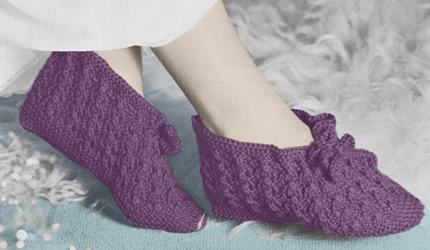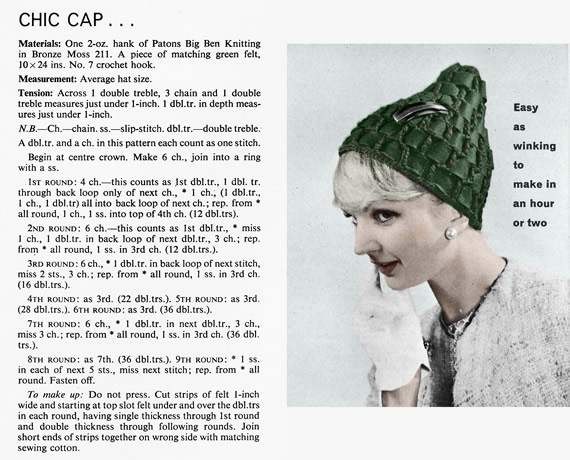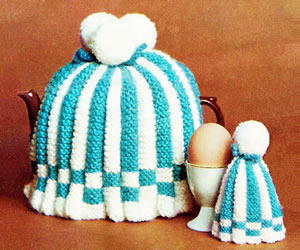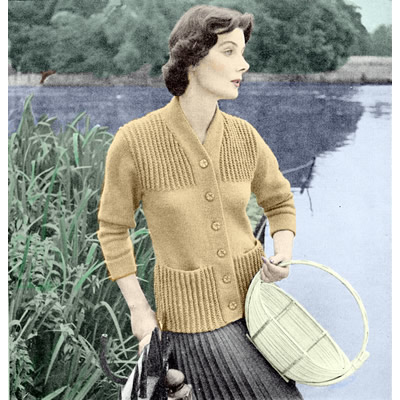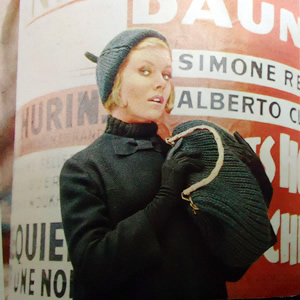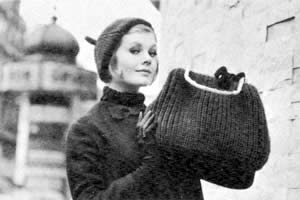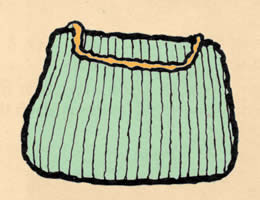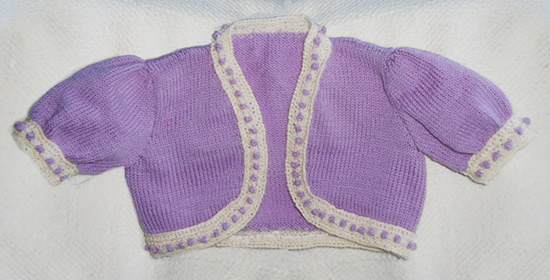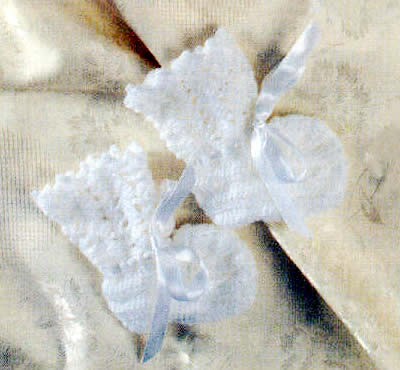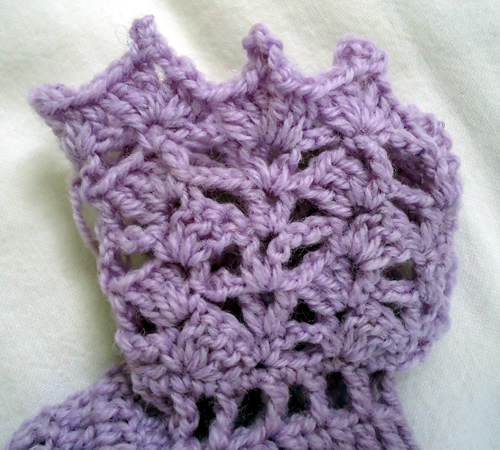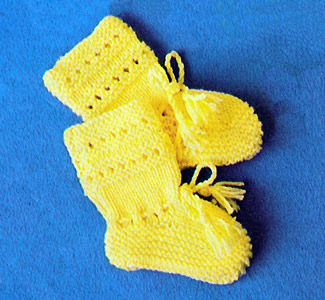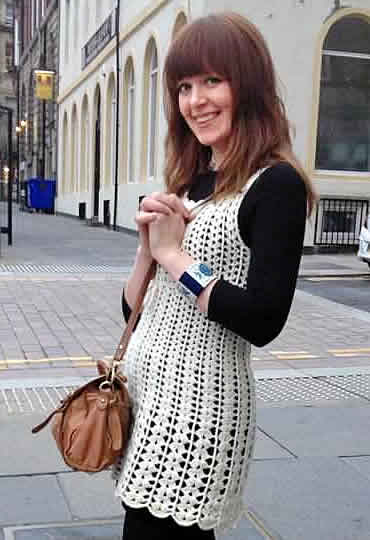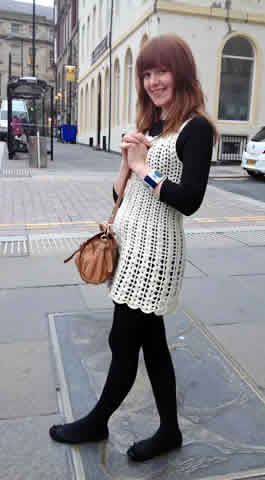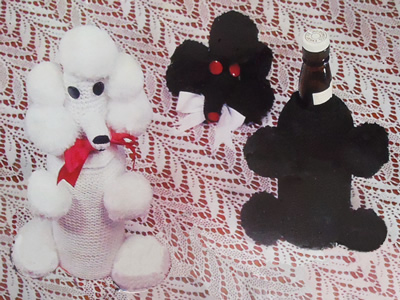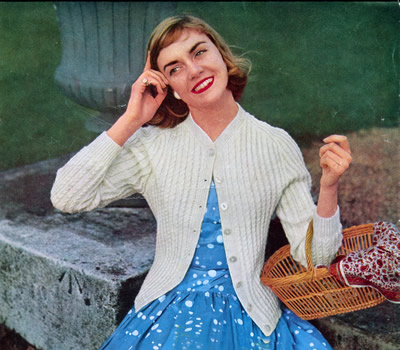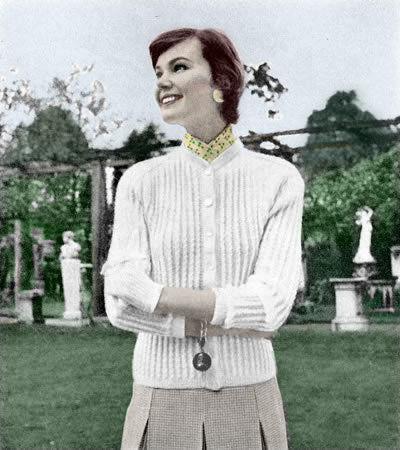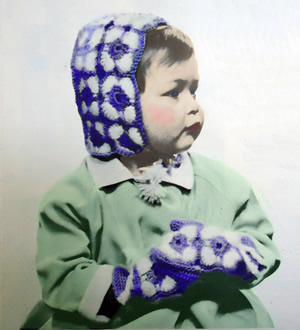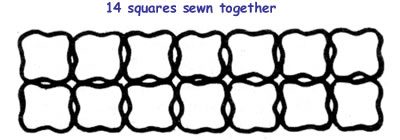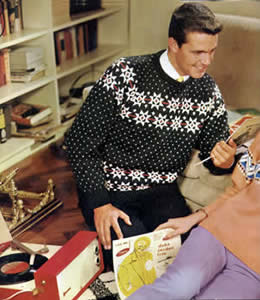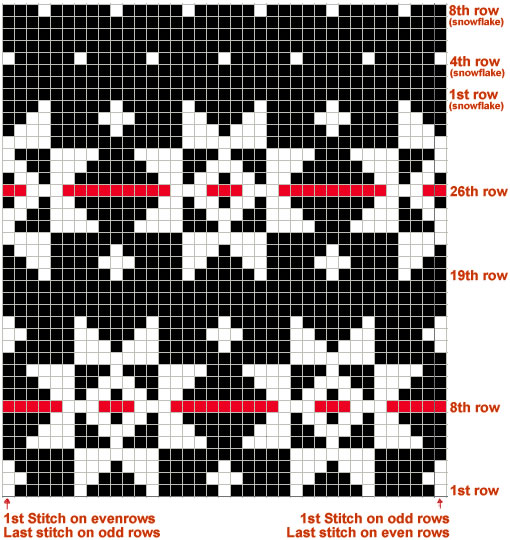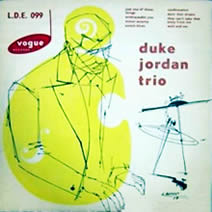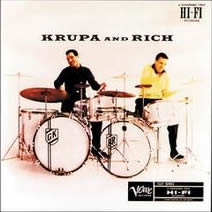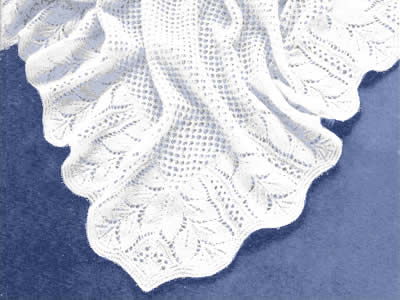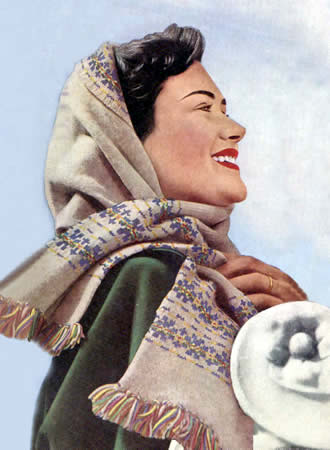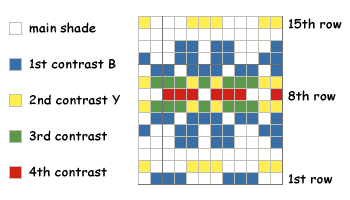Instructions
The shawl is made in 5 pieces: first a centre square, and then 4 mitred
borders that are sewn on each side of the centre.
Centre Square
With No 8 needles, cast on 162 stitches.
1st row: knit.
2nd row: k1, *
(k1, p1, k1 all into next stitch), sl1, k2tog, psso; repeat from *
to last stitch, k1.
3rd row: knit.
4th row: k1, *
sl1, k2tog, psso, (k1, p1, k1 all into next stitch); repeat from *
to last stitch, k1.
Repeat the last 4 rows until work measures 21 inches.
Cast off.
Borders (make 4)
With No 9 needles, cast on 206 stitches.
1st row: knit.
2nd row: k2tog, knit to last 2 stitches,
k2tog.
3rd row: knit.
Repeat 2nd and 3rd rows twice more [200 sts].
Change to pattern as follows:-
1st row: p2tog, p4, k2tog, wrn, p2,
* (k1, wfd) twice, k2, k2tog, p1,
sl1, k1, psso, k1, k2tog, p1, sl1, k1, psso, k1, k2tog, p1, sl1, k1, psso,
k2, (wfd, k1) twice, p2, k2tog, wrn, p2; repeat from *
5 times more, p2, p2tog. [186 sts]
2nd row: k5, p2, k2, *
p7, (k1, p3)twice, k1, p7, k2, p2, k2; repeat from *
5 times more, k3.
3rd row: p2tog, p3, wfd, sl1, k1,
psso, p2, * k1, wfd, k3, wfd, k1,
k2tog, p1, sl1, k1, psso, k1, p1, k1, k2tog, p1, sl1, k1, psso, k1, wfd,
k3, wfd, k1, p2, wfd, sl1, k1, psso, p2; repeat from *
5 times more, p1, p2tog. [184 sts]
4th row: k4, p2, k2, *
p8, k1, (p2, k1) twice, p8, k2, p2, k2; repeat from *
5 times more, k2.
5th row: p2tog, p2, k2tog, wrn, p2,
* k1, wfd, k5, wfd, k2tog, p1, sl1,
k1, psso, p1, k2tog, p1, sl1, k1, psso, wfd, k5, wfd, k1, p2, k2tog,
wrn, p2; rep, from * 5 times more,
p2tog. [182 sts]
6th row: k3, p2, k2, *
p9, k1, (p1, k1) twice, p9, k2, p2, k2; repeat from *
5 times more, k1.
7th row: p2tog, p1, *
wfd, sl1, k1, psso, p2, k1, wfd, k7, wfd, sl1, k2tog, psso, p1, sl1, k2tog,
psso, wfd, k7, wfd, k1, p2; repeat from *
5 times more, wfd, sl1, k1, psso, p1, p2tog. [180 sts]
8th row: k2, p2, k2, *
p11, k1, p11, k2, p2, k2; repeat from *
to end.
9th row: p2tog, k2tog, wrn, *
p2, k1, wfd, k9, wfd, sl1, k2tog, psso, wfd, k9, wfd, k1, p2, k2tog, wrn;
repeat from * 5 times more, p2tog.
[178 sts]
10th row: k1, p2, *
k2, p25, k2, p2; repeat from * 5 times
more, k1.
11th row: k2tog, k1, *
p2, k1, wfd, k3, k2tog, p1, sl1, k1, psso, k3,
wfd, k1, wfd, k3, k2tog, p1, sl1, k1, psso, k3, wfd, k1, p2, wfd, sl1,
k1, psso; repeat from * 4 times more,
p2, k1, wfd, k3, k2tog, p1, sl1, k1, psso, k3, wfd, k1, wfd, k3, k2tog,
p1, sl1, k1, psso, k3, wfd, k1, p2, k1, k2tog. [176 sts]
12th row: *
p2, k2, p6, k1, p11, k1, p6, k2; repeat from *
5 times more, p2.
13th row: k2tog, *
p2, (k1, wfd) twice, k2, k2tog, (p1, sl1, k1, psso, k1, k2tog) twice,
p1, sl1, k1, psso, k2, (wfd, k1) twice, p2, k2tog, wrn; repeat from *
4 times more, p2, (k1, wfd) twice, k2, k2tog, (p1, sl1, k1, psso, k1,
k2tog) twice, p1, sl1, k1, psso, k2, (wfd, k1) twice, p2, k2tog. [174
sts]
14th row: *
p1, k2, p7, k1, (p3, k1) twice, p7, k2, p1; repeat from *
to end.
15th row: p2tog, p1, *
k1, wfd, k3, wfd, k1, k2tog, p1, sl1, k1, psso, k1, p1, k1, k2tog, p1,
sl1, k1, psso, k1, wfd, k3, wfd, k1, p2, wfd, sl1, k1, psso, p2; repeat
from * 4 times more, k1, wfd, k3,
wfd, k1, k2tog, pl, sl1, k1, psso, k1, p1, k1, k2tog, p1, sl1, k1, psso,
k1, wfd, k3, wfd, k1, p1, p2tog. [172 sts]
16th row: *
k2, p8, k1, (p2, k1) twice, p8, k2, p2; repeat from *
4 times more, k2, p8, k1,(p2, k1) twice, p8, k2.
17th row: p2tog, *
k1, wfd, k5, wfd, k2tog, p1, sl1, k1, psso, p1, k2tog, p1, sl1, k1, psso,
wfd, k5, wfd, k1, p2, k2tog, wrn, p2; repeat from *
4 times more, k1, wfd, k5, wfd, k2tog, p1, sl1, k1, psso, p1, k2tog, p1,
sl1, k1, psso, wfd, k5, wfd, k1, p2tog. [170 sts]
18th row: k1, *
p9, k1,(p1, k1) twice, p9, k2, p2, k2; repeat from *
4 times more, p9, k1, (p1, k1) twice, p9, k1.
19th row: k2tog, wfd., k7, wfd, sl1,
k2tog, psso, * p1, sl1, k2tog, psso,
wfd, k7, wfd, k1, p2, wfd, sl1, k1, psso, p2, k1, wfd, k7, wfd, sl1, k2tog,
psso; repeat from * 4 times more,
p1, sl1, k2tog, psso, wfd, k7, wfd, k2tog. [168 sts]
20th row: p11, *
k1, p11, k2, p2, k2, p11; repeat from *
4 times more, k1, p11.
21st row: k2tog, k8, *
wfd, sl1, k2tog, psso, wfd, k9, wfd, k1, p2, k2tog, wrn, p2, k1, wfd,
k9; repeat from * 4 times more, wfd,
sl1, k2tog, psso, wfd, k8, k2tog. [176 sts]
22nd row: p10, *
p13, k2, p2, k2, p12; repeat from *
4 times more, p11.
23rd row: k2tog, k3, sl1, k1, psso,
k3, wfd, * k1, wfd, k3, k2tog, p1,
sl1, k1, psso, k3, wfd, k1, p2, wfd, sl1, k1, psso, p2, k1, wfd, k3, k2tog,
p1, sl1, k1, psso, k3, wfd; repeat from *
4 times more, k1, wfd., k3, k2tog, k3, k2tog. [174 sts]
24th row: p15, *
k1, p6, k2, p2, k2, p6, k1, p11; repeat from *
4 times more, p4.
25th row: k2tog, k7, p1, *
sl1, k1, psso, k1, k2tog, p1, sl1, k1, psso, k2, (wfd, k1) twice, p2,
k2tog, wrn, p2, (k1, wfd) twice, k2, k2tog, p1, sl1, k1, psso, k1, k2tog,
p1; repeat from * 4 times more, k7,
k2tog. [162 sts]
26th row: p8, k1, *
p3, k1, p7, k2, p2, k2, p7, k1, p3, k1; repeat from *
4 times more, p8.
27th row: k2tog, k6, p1, *
k1, k2tog, p1, sl1, k1, psso, k1, wfd, k3, wfd, k1, p2, wfd, sl1, k1,
psso, p2, k1, wfd, k3, wfd, k1, k2tog, p1, sl1, k1, psso, k1, p1; repeat
from * 4 times more, k6, k2tog. [160
sts]
28th row: p7, k1, *
p2, k1, p8, k2, p2, k2, p8, k1, p2, k1; repeat from *
ending p7.
29th row: k2tog, k5, p1, *
k2tog, p1, sl1, k1, psso, wfd, k5, wfd, k1, p2, k2tog, wrn, p2, k1, wfd,
k5, wfd, k2tog, p1, sl1, k1, psso, p1; repeat from *
4 times more, k5, k2tog. [158 sts]
30th row: p6, k1, *
p1, k1, p9, k2, p2, k2, p9, k1, p1, k1; repeat from *
4 times more, p6.
31st row: k2tog, k4, p1, *
sl1, k2tog, psso, wfd, k7, wfd, k1, p2, wfd, sl1, k1, psso, p2, k1, wfd,
k7, wfd, s1, k2tog, psso, p1; repeat from *
4 times more, k4, k2tog. [156 sts]
32nd row: p5, k1, *
p11, k2, p2, k2, p11, k1; repeat from *
4 times more, p5.
33rd row: k2tog, k3, sl1, k1, psso,
wfd, k9, wfd, k1, p2, k2tog, wrn, *
p2, k1, wfd, k9, wfd., sl1, k2tog, psso, wfd, k9, wfd, k1, p2, k2tog,
wrn; repeat from * 3 times more, p2,
k1, wfd, k9, wfd, sl1, k1, psso, k3, k2tog. [164
sts]
34th row: p17, *
k2, p2, k2, p25; repeat from * 3 times
more, k2, p2, k2, p17.
35th row: k2tog, k3, *
wfd, k3, k2tog, p1, sl1, k1, psso, k3, wfd, k1, p2, wfd, sl1, k1, psso,
p2, k1, wfd, k3, k2tog, p1, sl1, k1, psso, k3, wfd, k1; repeat from *
4 times more, k2, k2tog. [162 sts]
36th row: p4, *
p5, k1, p6, k2, p2, k2, p6 k1, p6; repeat from *
4 times more, p3.
Cast off 162 stitches.
Make 3 more pieces the same.
To Make Up
Pin parts out and press very lightly under a damp cloth (so not to flatten the pattern stitches too much).
Join borders very neatly to centre square, then join corners of border.
Press all seams.
|
Materials
5 ozs 3 ply Patons Baby Wool.
A pair each No 8 (4mm) and No 9 (3¾mm) needles.
Tension
In stocking stitch: 26 stitches. and 34 rows to 4 inches on No 8 needles.
28 sts x 36 rows to 4 inches on No 9 needles.
Size matters
32 inches square.
Abbreviations
wrn: "wool round needle"; make an extra stitch by winding
the wool around the needle (which forms a small pattern hole when worked
on the next row).
wfd: "wool forward": make a stitch by bringing the wool
to the front of the work and then passing the yarn over the needle when
you make the next stitch.
sl1: slip 1 stitch.
psso: pass the slipped stitch over.
s1,k1,psso: slip 1, knit 1, pass the slipped stitch over; also
known as "ssk" (slip, slip, knit).
k2tog or p2tog: knit or purl 2 sts together (decrease one stitch).
A word on the wool.
The original pattern calls for Patons "Beehive" which is no
longer available but Patons
do a range of 3 ply baby wools.
Patons
Dreamtime Fairytale is 100% wool available in 6 pastel shades; wash
at 30°; 50g ball, 230m/252 yards.
They also make Fairytale 3 ply (not "Dreamtime"), which is
a mix of acrylic and nylon in white only. Maybe not so perfect for an
heirloom shawl.
Disclaimer
(well...almost)
In transposing any pattern it is always a risk that errors will be introduced,
in spite of dedicated proof reading.
If you have any problems with this pattern, please
and I will try and assist.
|
